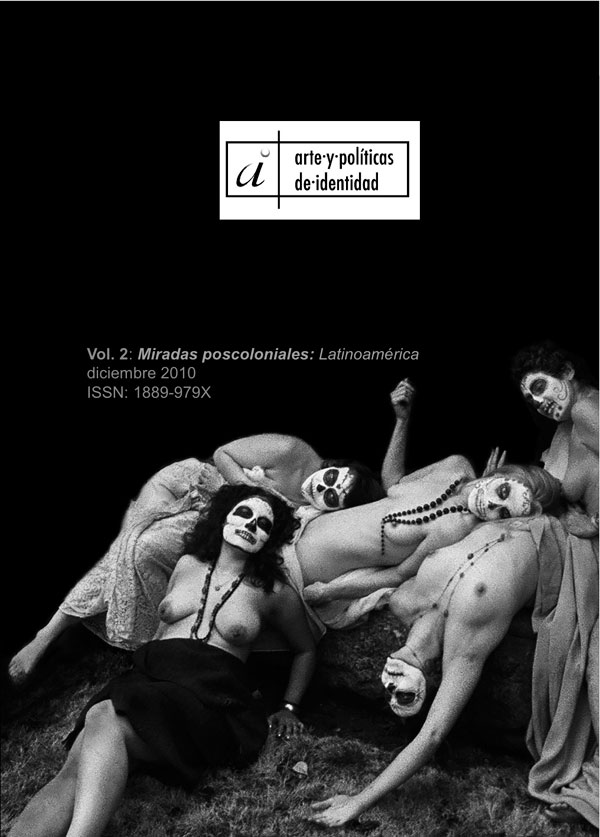Geography of the world’s ending: Capital and the production of terminal spaces
Abstract
Apocalypse happens all the time and is no longer a time, but a place. Catastrophes are no longer singular events, but geographical structures with their own spatial and juridico-political configuration: disaster-spaces that confine what Agamben calls Homo Sacer. Their territorial counter-poles are the maximum security, luxury enclaves of the world’s new sovereigns in Carl Schmitt’s sense: the global super-rich, who live outside state regulations in hightech neoliberal utopias symbolised by Dubai. These terminal spaces are not Foucauldian heterotopias, nor can their complexity be captured by other outmoded theoretical vocabularies. Today’s capitalism is anisotropic: it generates and interconnects different types of spatiality, with different laws of movement, for which only some forms of science fiction and contemporary art offer valid tropes.Downloads
-
Abstract259
-
PDF (Español (España))198
References
Agamben, G. (1995). Homo Sacer: Il potere soverano e la vita nuda, trans. by D. Heller-Roazen as Homo Sacer: Sovereign Power and Bare Life. Stanford: Stanford University Press.
Julien Brygo (2010). Glasgow’s Two Nations. Le Monde diplomatique. Retrieved September 11, 2010, from http://mondediplo.com/2010/09/13glasgow
Davis, M. (2006). Planet of Slums. London: Verso.
Davis, M. & Monk, D. B. (Eds.). (2007). Evil Paradises: Dreamworlds of Neoliberalism.New York: New Press.
Emmerich, R. (Director.). (2009). 2012 [Motion picture]. USA: Columbia Pictures.
Foucault, M. (1966). Les mots et les choses: une archéologie des sciences humaines. Paris: Gallimard.
Gorz, A. (1980). Adieux au Prolétariat, trans. by M. Sonenscher as Farewell to the Working Class. London: Pluto Press.
Gottdiener, M. (1986). Recapturing the Center: A Semiotics of Shopping Malls. In M. Gottdiener & A. P. Lagopoulos (Eds.), The City and the Sign: An Introduction to Urban Semiotics (pp. 288-302). New York: Columbia University Press.
Gutiérrez, S. (2009). Organ Market. Retrieved September 11, 2010 from http://www.embeddedart.de/index.cfm?id=1164&as=14179&pk=1511&ln=uk
Harvey, D. (1982 [2006]). The Limits to Capital. London: Verso.
---------(1989). The Condition of Postmodernity: An inquiry into the Origins of Cultural Change. Oxford: Basil Blackwell.
---------(1996). Justice, Nature and the Geography of Difference. Oxford: Basil Blackwell.
---------(2003). The New Imperialism. Oxford: Oxford University Press.
Jameson, F. (1991). Postmodernism, or the Cultural Logic of Late Capitalism. London: Verso.
Kaczynski, T. (2009). Delirious Dubai. Retrieved September 11, 2010 from http://www.transatlantis.net/blog/2009/02/14/delirious-dubai/
Klein, N. (2007). The Shock Doctrine: The Rise of Disaster Capitalism. New York: Metropolitan Books.
Lefebvre, M. (1974 [1991]). Production de l’espace, trans. by d. Nicholson-Smith as The Production of Space. Oxford: Blackwell.
Lubitsch, E. (Director.). (1942). To Be or Not to Be [Motion picture]. USA: United Artists.Luxemburg, R. (1913 [1951]). Die Akkumulation des Kapitals, trans. by A. Schwarzschild as The Accumulation of Capital. London: Routledge and Kegan Paul.
Marshall, G. (1998). Uneven development. In A Dictionary of Sociology, retrieved September 05, 2010 from Encyclopedia.com: http://www.encyclopedia.com/doc/1O88-unevendevelopment.html
Marx, K. (1867 [2007]). Das Kapital: Kritik der politischen Ökonomie, trans. by S. Moore and E. Aveling; as Capital: A Critique of Political Economy. New York: Cosimo.
Maté, R. (Director.). (1951). When Worlds Collide [Motion picture]. USA: Paramount Pictures.
McHale, B., (1987). Postmodernist Fiction. London: Methuen.
Paulu, T. (2008). Delirious Dubai. Retrieved September 11, 2010 from http://tdn.com/ lifestyles/article_f145d5a0-f5d4-56b6-b151-2439ea6e1b87.html
Reynolds, A. (2010). Terminal World. London: Gollancz.
Schmitt, C. (1922 [2005]). Politische Theologie: Vier Kapitel zur Lehre von der Souveränität, trans. by G. Schwab as Political Theology: Four Chapters on the Concept of Sovereignty. Chicago and London: The University of Chicago Press.
Sedensky, M. (2006, September 18). Hurricane Victims Can Evacuate in Style, USA Today. Retrieved September 11, 2010 from http://www.usatoday.com/travel/ flights/2006-09-18-hurricane-evacuation-style_x.htm
The Web’s New Walls: How the Threats to the Internet’s Openness Can Be Averted (2010, September 2). The Economist. Retrieved September 11, 2010 from http://www.economist.com/node/16943579?story_id=16943579
Scott, R. (Director). (1982). Blade Runner [Motion picture]. USA: Warner Bros.Silverman, B. (1996). Transcription of the 1982 US Theatrical Release of Blade Runner. Retrieved September 11, 2010 from http://rgrosser.tripod.com/ HeSayYouBradeRunna.htm
Watts, J. (2004, June 2). Shanghai Surprise ... A New Town in Ye Olde English Style, The Guardian. Retrieved September 11, 2010 from http://www.guardian.co.uk/ world/2004/jun/02/arts.china1
Wells, H.G. (1895). The Time Machine. London: Heinemann. Ye Cannae Change the Laws of Physics... Or Can You? (2010, September 2). The Economist. Retrieved September 11, 2010 from http://www.economist.com/ node/16941123?story_id=16941123
Žižek, S. (2002, May 10). Are We in War? Do We Have an Enemy? London Review of Books. Retrieved September 11, 2010 from http://www.lacan.com/zizek-are.htm----------. (2009). First as Tragedy, Then as Farce. London: Verso.
Works published in this journal are subject to the following terms:
- The Service of Publications from the University of Murcia (publishing house) keeps the published works’ copyrights, and favors and allows the reuse of these works under the license indicated in point 2.
- Works are published in the journal’s online edition under the license Creative Commons Reconocimiento-NoComercial-SinObraDerivada 3.0 España(texto legal). They can be copied, used, disseminated, transmitted and publicly exhibited, as long as: i) the author and original source of publication are cited (journal, publishing house and work’s URL); ii) they are not used for commercial purposes; iii) the existence and specifications of this license are mentioned.
3. Conditions for auto-file. It is allowed and encouraged that authors share electronically their pre-print version (the pre-reviewed version) and /or post-print version (the reviewed and accepted version) of their Works before the publication, since it promotes its circulation and dissemination. RoMEO color: green.










